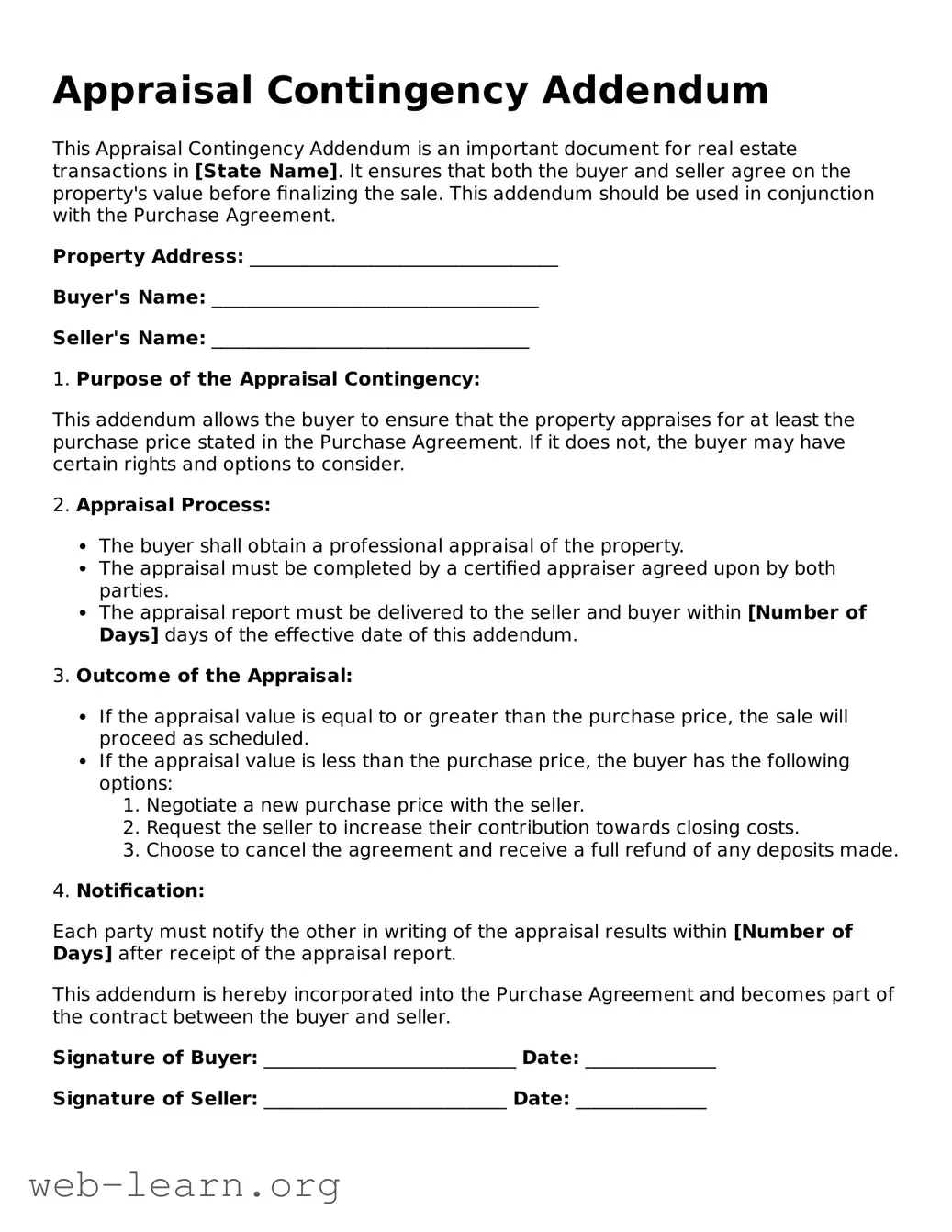Appraisal Contingency Addendum
This Appraisal Contingency Addendum is an important document for real estate transactions in [State Name]. It ensures that both the buyer and seller agree on the property's value before finalizing the sale. This addendum should be used in conjunction with the Purchase Agreement.
Property Address: _________________________________
Buyer's Name: ___________________________________
Seller's Name: __________________________________
1. Purpose of the Appraisal Contingency:
This addendum allows the buyer to ensure that the property appraises for at least the purchase price stated in the Purchase Agreement. If it does not, the buyer may have certain rights and options to consider.
2. Appraisal Process:
- The buyer shall obtain a professional appraisal of the property.
- The appraisal must be completed by a certified appraiser agreed upon by both parties.
- The appraisal report must be delivered to the seller and buyer within [Number of Days] days of the effective date of this addendum.
3. Outcome of the Appraisal:
- If the appraisal value is equal to or greater than the purchase price, the sale will proceed as scheduled.
- If the appraisal value is less than the purchase price, the buyer has the following options:
- Negotiate a new purchase price with the seller.
- Request the seller to increase their contribution towards closing costs.
- Choose to cancel the agreement and receive a full refund of any deposits made.
4. Notification:
Each party must notify the other in writing of the appraisal results within [Number of Days] after receipt of the appraisal report.
This addendum is hereby incorporated into the Purchase Agreement and becomes part of the contract between the buyer and seller.
Signature of Buyer: ___________________________ Date: ______________
Signature of Seller: __________________________ Date: ______________
